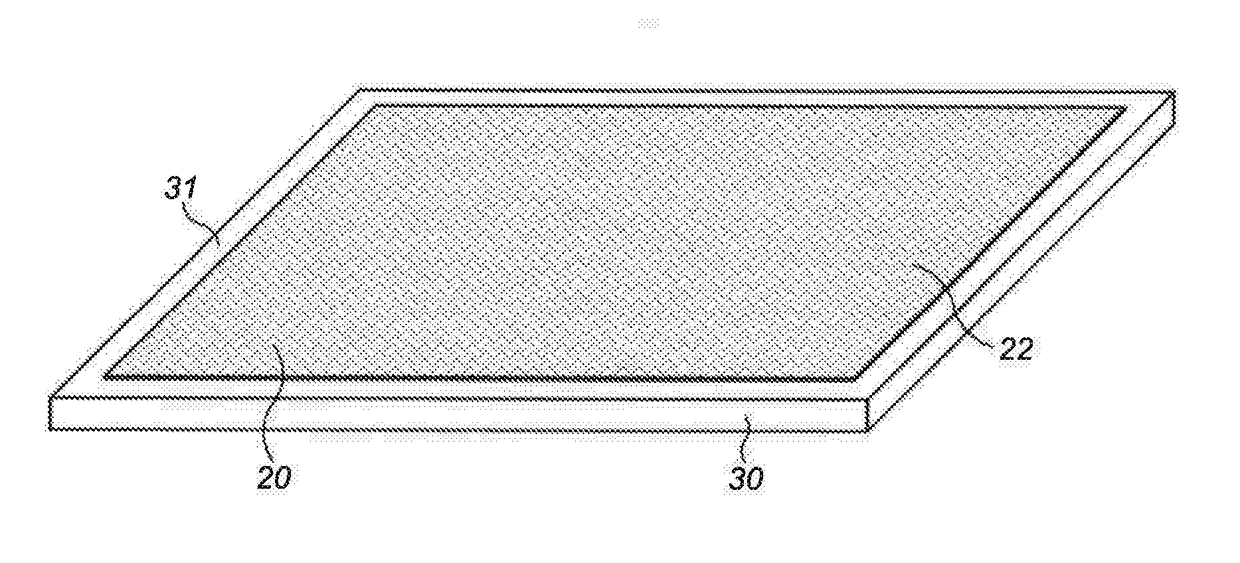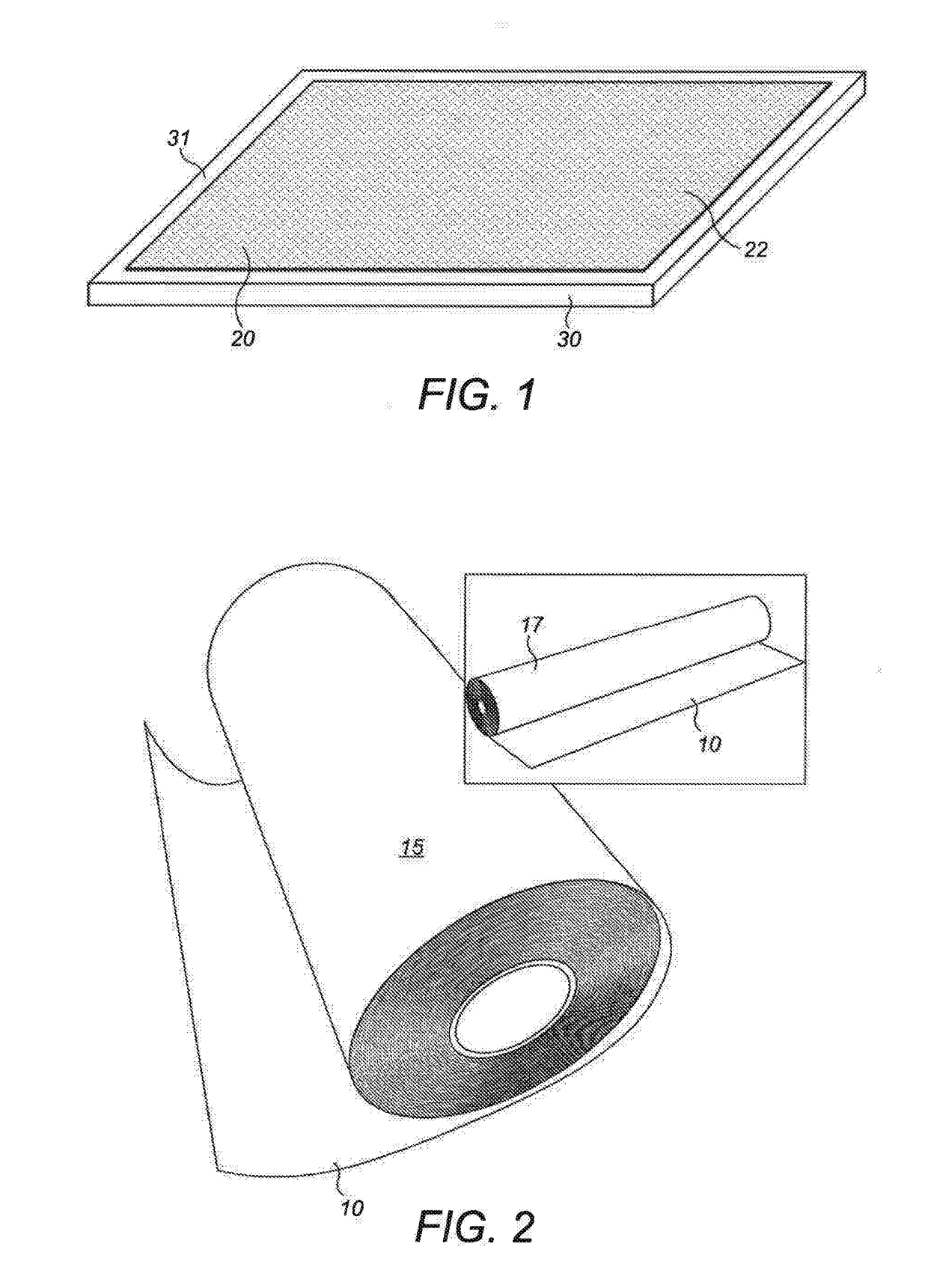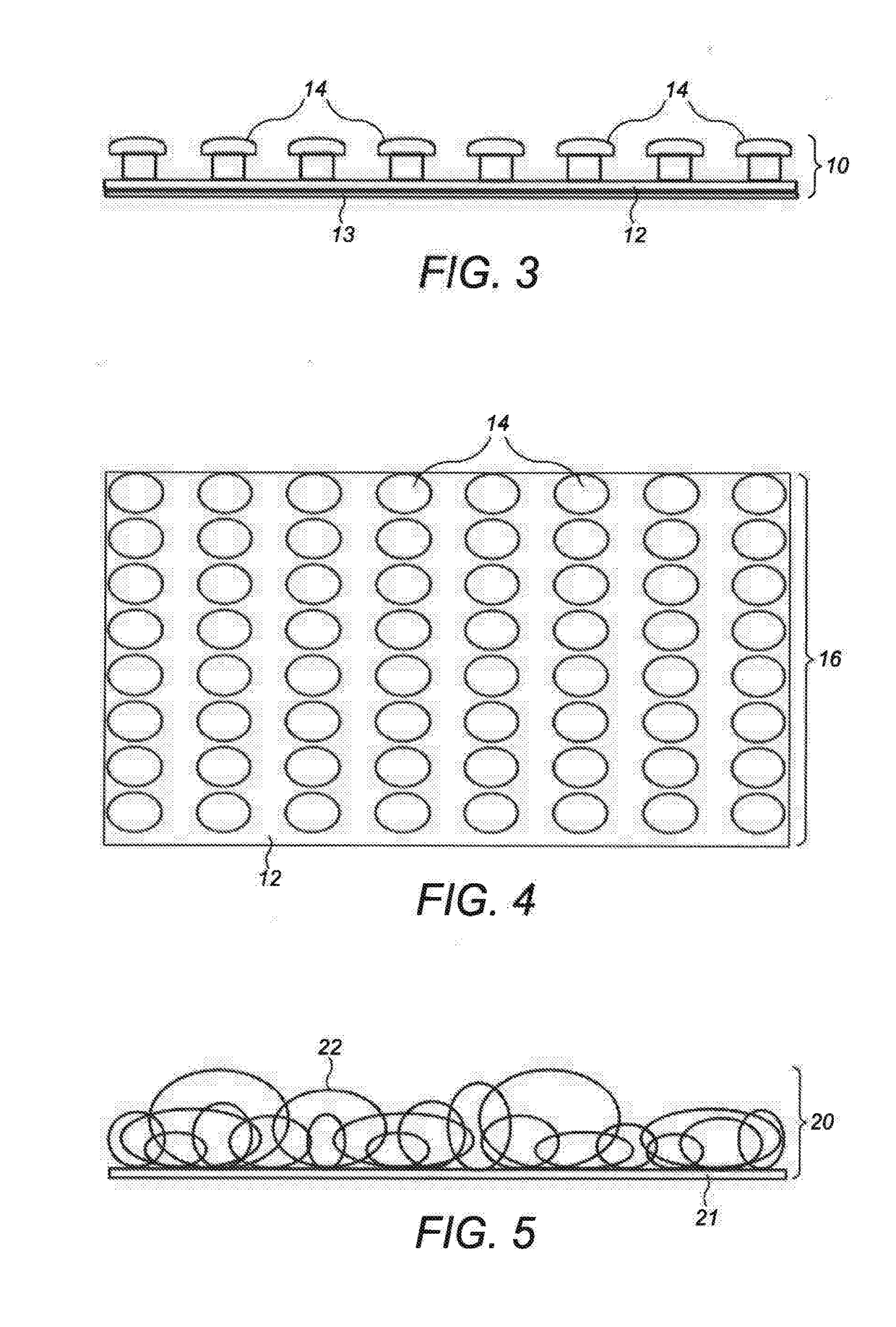Referring to tiles and in particular wall tiles of ceramic material, traditional fixing of
ceramic tiles using
cement based adhesives create what is in effect a permanent bond between the tile and the wall making it difficult to remove tiles and often leading to damage of the underlying surfaces which are then in need of repair.
The main reason given for infrequent decorating of tiled areas is the overall fear of tiling projects.
This fear arises from a combination of problems:a) the mess caused by tiling;b) the perceived permanence of tiling and therefore the fear of choosing the wrong product;c) the need to engage with a tradesman as tiling is seen as a skilled job;d) the lack of knowledge when choosing a suitable tile
adhesive; ande) the fear of mixing and applying
cement based tile adhesives.
1. fasteners that were capable of securely fixing a ceramic tile but created a bond that was too strong and so prevented easy removal of the hook-and-loop fastened tiles, such as Velcro® fasteners;
2. fasteners that allowed easy tile removal of the hook-and-loop fastened tiles but that created a bond that was not strong enough to hold the tile securely to the wall, such as Fastna fasteners; and
3. fasteners that permit unacceptable
lateral movement of the tiles within the plane of the wall, such that the position of the tiles ‘creeps’ over time.
Tests showed that products such as Velcro®
adhesive backed
heavy duty fasteners created a bond that was too strong for easy tile removal and products such as Fastna low-profile self-
adhesive fasteners created a bond that was not strong enough to support the weight of a tile, particularly a
large format tile.
In other words, the pull strength and
shear strength of the off-the-shelf fastenings was either not sufficient to hold the tile securely on the wall or was too strong to allow easy removal of the tile.
In both cases, the fasteners permitted too much
lateral movement within the plane of the tile once the tile had been fastened to the wall.
Thus, hook-and-loop fasteners having a bond which was ‘too strong and prevented easy tile removal’ had different hook and loop engagement properties from those hook-and-loop fasteners having a bond that was ‘not strong enough to hold the tiles securely in place’.
The Applicant found that the issues identified above were particularly problematic because of the following reasons.
Firstly, the relatively
heavy weight of a rigid tile body means that the tile's own weight tends to pull the tile off the wall.
Secondly, this first factor is exacerbated by the fact that the tile must be hung vertically on the wall, rather than horizontally on the floor, which means the weight of the tile tends to apply a
shear stress to the fastening.
Thirdly, the rigidity of the tiles makes a peeling motion difficult.
Moreover, the structural adaptions constituted by the continuous hook-and-loop
fastener location recess 6 and strengthening ribs 7, 8 would require prohibitively expensive changes in current, well-established manufacturing techniques, as mentioned previously.
Drywall panels often have slightly recessed joining margins so that tape must be applied without forming a
ridge in the surface and frequently the panels must be
cut to fit and these recessed margins may not be conveniently used.
Thus a large amount of skilled labour is needed involving the application of tape and plaster over adjoining board joints, the plaster being applied in several
layers with sanding down resulting in the generation of unhealthy dust.
If mistakes are made, their rectification increases
completion time and further increases costs.
And the various attachment parts may be substantially undamaged by installation and removal from the nailed or screwed anchor sheets / panels bearing one half of the hook and loop fastening
system.
 Login to View More
Login to View More  Login to View More
Login to View More 


